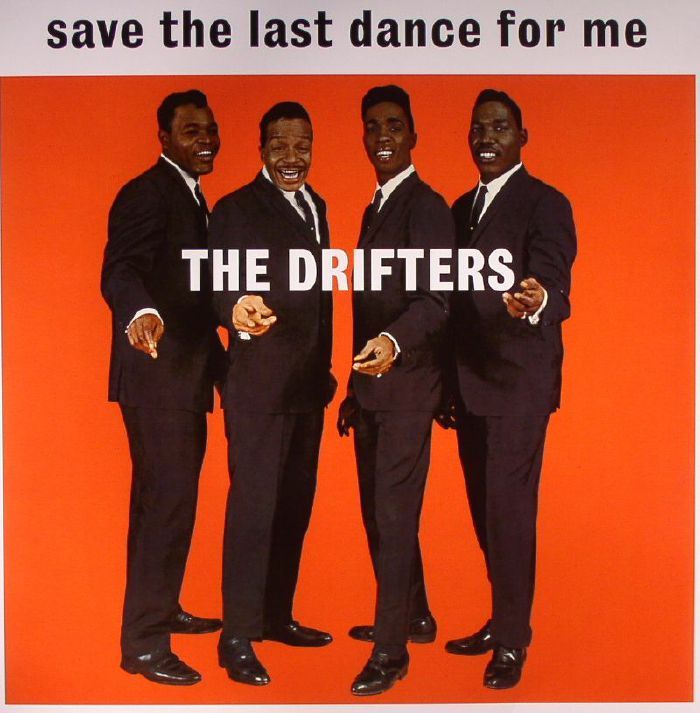In The Number Ones, I'm reviewing every single #1 single in the history of the Billboard Hot 100, starting with the chart's beginning, in 1958, and working my way up into the present.
The Drifters - "Save The Last Dance For Me"
HIT #1: October 17, 1960
STAYED AT #1: 3 weeks
It's amazing, what a pop song can be. In three minutes, a frothy and disposable piece of cultural ephemera can enter your bloodstream, trigger endorphin rushes, and leave you staggering. It can reduce you to tears even if it's not a sad song. It can make you feel like everything is right in the world. "Save The Last Dance For Me" is one of those.
In reading about "Save The Last Dance For Me," I've come across people who consider it to be a song about romantic possessiveness, about the paranoid lingering fear that the person you're with is always ready to leave you the second someone better comes along. Ben E. King, singing lead on "Save The Last Dance," tells his date that it's fine if she wants to dance with anyone else, but he cautions her, too: "If he asks if you're all alone, can he take you home, you must tell him no."
But that's not what I hear in the song. I hear pleasure. I hear generosity. I hear King, with real fondness in his voice, enjoying watching his date glide across the floor with someone else, feeling fully confident that she'll come back to him when it's all over. I hear it specifically as a song about the absence of romantic possessiveness. In a different decade, it could've been a polyamorous swingers' anthem.
There's a heartwrenching context to the song. Legend has it that Doc Pomus scrawled the song's lyrics on the back of an invitation to his own wedding. Pomus, a polio survivor, spent his wedding night in a wheelchair, watching his wife, a Broadway dancer and actress, dancing with his brother. The marriage would be over in a few years, but the song Pomus wrote that night will last forever.
Ben E. King had already left the Drifters by the time "Save The Last Dance For Me" came out. This was normal. The Drifters had been around for years by 1960, switching up their lineups with brutally ruthless efficiency. King is now remembered as their greatest, most iconic leader, but the group kept going for decades, scoring hits well into the '70s. And it's nice to think of "Save The Last Dance For Me" as King's parting gift to the group that made him famous.
It's a gorgeous arrangement, that fluttering half-Latin piano with those strings circling around it. King's voice is a honeyed tenor, warm and casual but weighted with meaning. The other Drifters' interjections are quick little punctuations -- "You can dance!," "Yes, I know!" -- that dissolve into angelic aaaahs on the chorus. Jerry Leiber and Mike Stoller produced the song, and Phil Spector, working at the time as a sort of understudy for them, may or may not have helped out. If those sounds aren't Spector's, then this is where he learned to put orchestral flourishes into the service of a simple, resonant pop song.
The strongest argument that Spector might've had a hand in this song: Those violins on the bridge, which hit like a drug. Nothing in the other #1 singles of 1960 sounded like those violins. And yet those violins aren't the sound that sticks with me most when "Save The Last Dance For Me" is over, when the song is still ricocheting around inside my skull. It's Ben E. King savoring the sound of his own voice, letting out a wordless mmmmmmm as the song is fading out. I know how he feels.
GRADE: 10/10
BONUS BEATS: So many people have recorded their own version of "Save The Last Dance For Me" over the years: Dion, Buck Owens, Jerry Lee Louis, Emmylous Harris, Harry Nilsson, Nancy Sinatra and Lee Hazlewood, the Walkmen. Phil Spector really did produce the Ike and Tina Turner version, from their River Deep, Mountain High album. Dolly Parton sang the shit out of it and made it into a synthy country hit in 1983. A distressing number of people seem to think of it as a Michael Bublé song; he had a minor hit with an extremely cheesy version of it in 2006.
On his final tour, Leonard Cohen ended every show with a warm and celebratory cover of "Save The Last Dance For Me," using it to thank all the people who had ever paid attention to his own songs. That means it's the last song he ever sang in public. Here's a fan-made video of that final performance, at a December 2013 show in Auckland, New Zealand:






